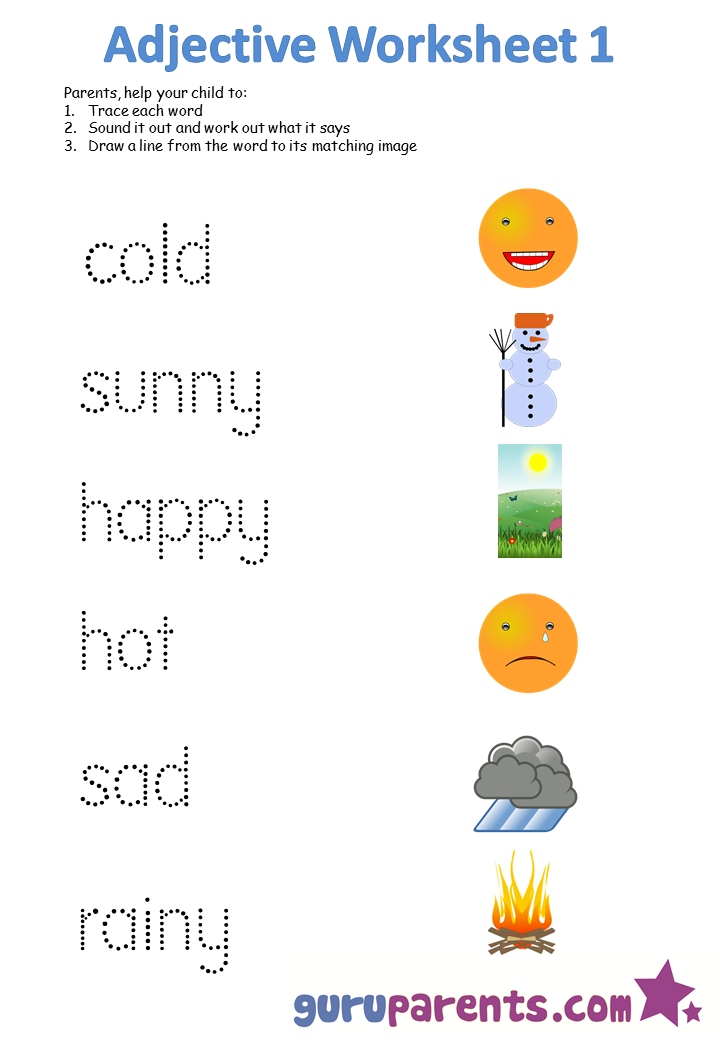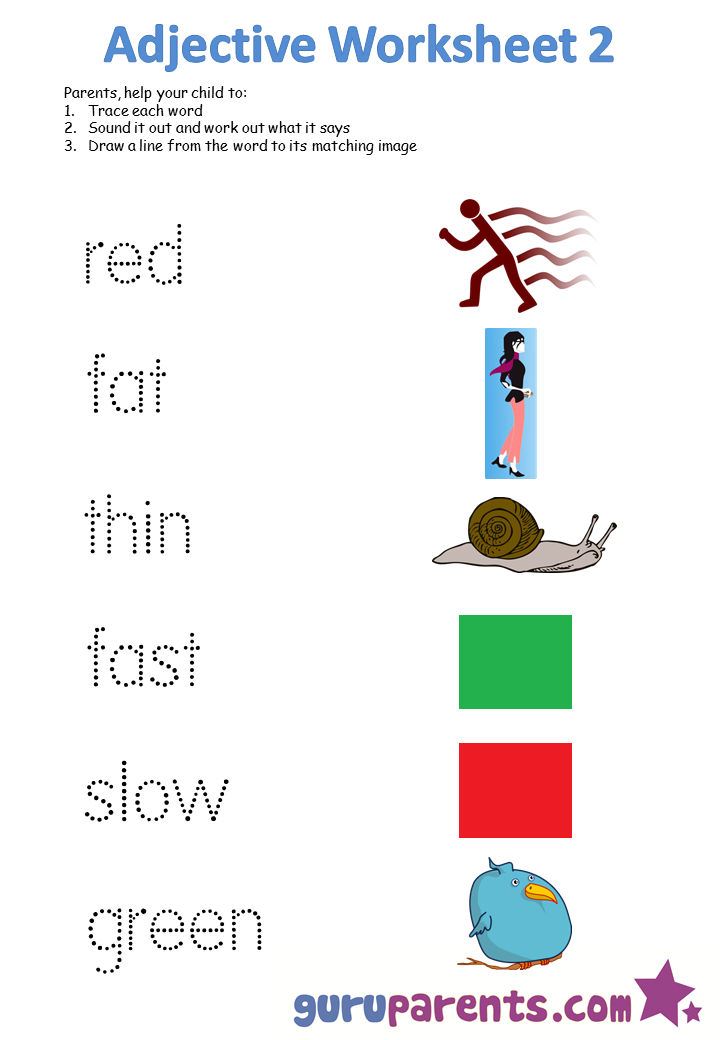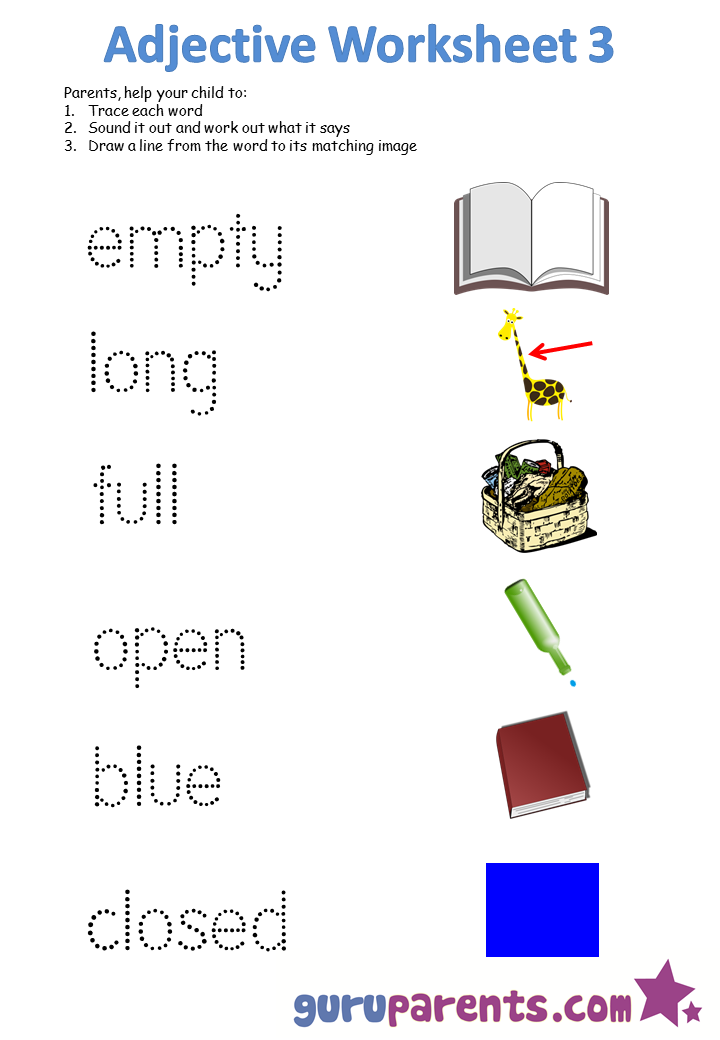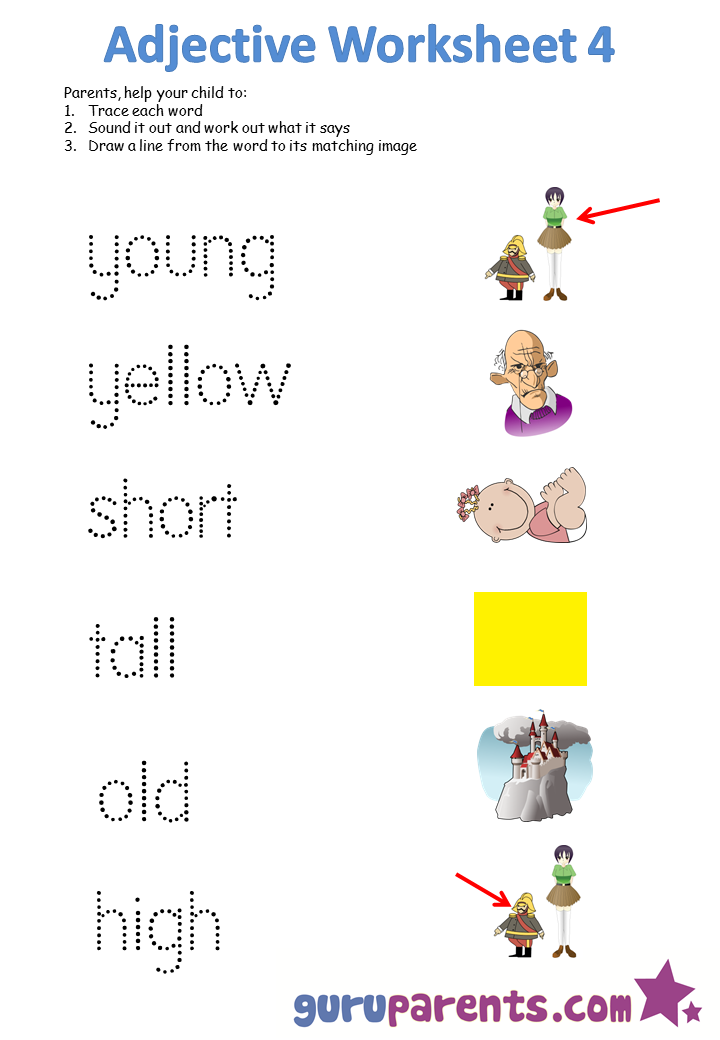Worksheets
Click here to download all adjective worksheets
Introduction
Our free, printable adjective worksheets are designed to help you introduce your child to the group of words known as “describing words”.
Adjectives are an important part of a child’s reading and writing vocabulary as they enrich the language a child is able to use and understand. We have selected twenty-four frequently used words for our worksheets, with each worksheet containing the following components:
* Handwriting: There are six words in large dotted font for your child to trace.
* Reading: After tracing a word your child should try to read it – with your assistance if necessary.
* Matching: Next, ask your child to choose which of the six images corresponds to the word.
* Drawing: Lastly, ask your child to draw a neat line from the word to its associated image.
Benefits
The advantages of using the worksheets are as follows:
1. Handwriting practice: By tracing each word your child will be having a mini handwriting lesson.
2. Letter combinations: The twenty-four different words contain a number of important letter combinations. Some examples include, the “ng” sound in “long”, the “th” sound in “thin”, the “ai” sound in “rainy”, the silent “gh” in “high” and the way that the “e” changes the pronunciation of the earlier vowel in “closed” and “open”.
3. Exposure to different forms of words: English is a difficult language to master and all young children (especially those learning English as a second language) need to become aware of its quirks. These worksheets can spark discussions with your child which will assist in consolidating some important concepts – for example, the subtle differences between “closed” and “close”, “rain” and “rainy” and “hot” and “heat”.
4. Practice in “matching”: Exercises in matching pairs will be common throughout your child’s school days, so the more familiar they are with the concept, the better.
5. Choosing the “best answer”: There is only one way to correctly complete each worksheet. However, occasionally a child may feel that there are two possible answers for a given word – for example, in worksheet 1, “hot” could conceivably be matched to either the “fire” image or the “sunny” one.
Having to choose the “most correct” option is often a feature of multiple choice tests so this is a nice opportunity to build some basic analytical skills. You can assist in this process if necessary – by explaining that if “hot” is linked to the “sunny” image it won’t work, because “sunny” cannot be connected to the “fire” image.
6. Introduction to the concept of adjectives: In most countries children these days are expected to develop quite a sophisticated understanding of grammar. You may wish to discuss with your child how each of the words is a “describing word” and to see if, together, you can think of some more examples.
Final word
Children learn at different speeds.
If your child races through these adjective worksheets – great! But if they find them overly difficult don’t be disheartened and don’t make them feel as though they have disappointed you.
Instead, why not read a fun book to your child like this one or this one!




